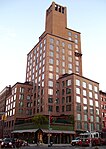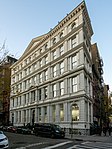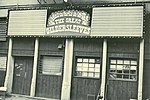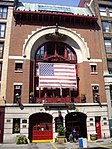Yoshino (restaurant)
Japanese restaurants in ManhattanMichelin Guide starred restaurants in ManhattanNew York City restaurant stubsNoHo, Manhattan
Yoshino is a Japanese restaurant in New York City.
Excerpt from the Wikipedia article Yoshino (restaurant) (License: CC BY-SA 3.0, Authors).Yoshino (restaurant)
Bowery, New York Manhattan
Geographical coordinates (GPS) Address Nearby Places Show on map
Geographical coordinates (GPS)
| Latitude | Longitude |
|---|---|
| N 40.726222222222 ° | E -73.992111111111 ° |
Address
Bowery 342
10012 New York, Manhattan
New York, United States
Open on Google Maps






